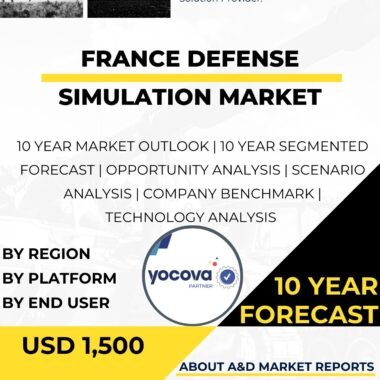Description
Overview
The Brazil Ship Simulator Market is vital for the nation’s maritime industry, naval training, and safety standards, enhancing maritime education and ensuring seafarer competency across Brazil’s vast maritime territories. Ship simulators, advanced training systems, replicate real-world maritime scenarios, enabling trainees to practice navigation, ship handling, and emergency procedures in a safe environment. As Brazil’s maritime sector grows, this market has gained prominence.
Market Growth and Strategic Importance
The Brazil Ship Simulator Market has seen steady growth due to the country’s commitment to maritime safety and professional development. With a vast coastline and critical maritime trade routes, Brazil relies on simulators to train seafarers, ensuring proficiency in navigating complex maritime environments and supporting economic growth.
Key Drivers
The market’s growth is driven by the need to meet International Maritime Organization (IMO) standards for seafarer training and certification. Simulators provide immersive training, enabling seafarers to practice navigation, collision avoidance, and emergency procedures to comply with global regulations. Brazil’s investment in advanced simulators also strengthens maritime education infrastructure, equipping professionals with cutting-edge training facilities.
Naval and Research Applications
The market grows due to simulators’ role in naval training and maritime research. The Brazilian Navy uses simulators to train personnel in ship handling, combat operations, and mission planning, enhancing operational readiness. Simulators also support maritime research, improving training methodologies.
Applications Across Maritime Sectors
The Brazil Ship Simulator Market supports various sectors. In commercial shipping, simulators train merchant mariners, including deck officers and engineers, in navigation and emergency response, reducing accident risks. Maritime schools use simulators to teach essential skills, fostering teamwork and preparing trainees for real-world challenges. In the naval sector, simulators enhance readiness through realistic simulations of warfare and emergency scenarios.
Challenges
The market faces challenges, including high costs for acquiring and maintaining advanced simulators with high-fidelity graphics and scenario libraries. Regulatory compliance with international training standards and certifications is resource-intensive. A shortage of skilled instructors for simulator operation and data interpretation also hinders growth.
Future Growth
The Brazil Ship Simulator Market is poised for continued growth as the maritime industry expands. Demand for advanced simulators will remain strong, driven by investments in research, technology transfers, and training facilities.
Conclusion
The Brazil Ship Simulator Market is crucial for enhancing maritime safety, professional development, and naval training. Simulators provide realistic training, ensuring seafarer competency and compliance with global standards. Growth is driven by Brazil’s focus on maritime education and safety. Overcoming challenges in cost, regulation, and skilled personnel will unlock the market’s potential for strengthening Brazil’s maritime workforce.




